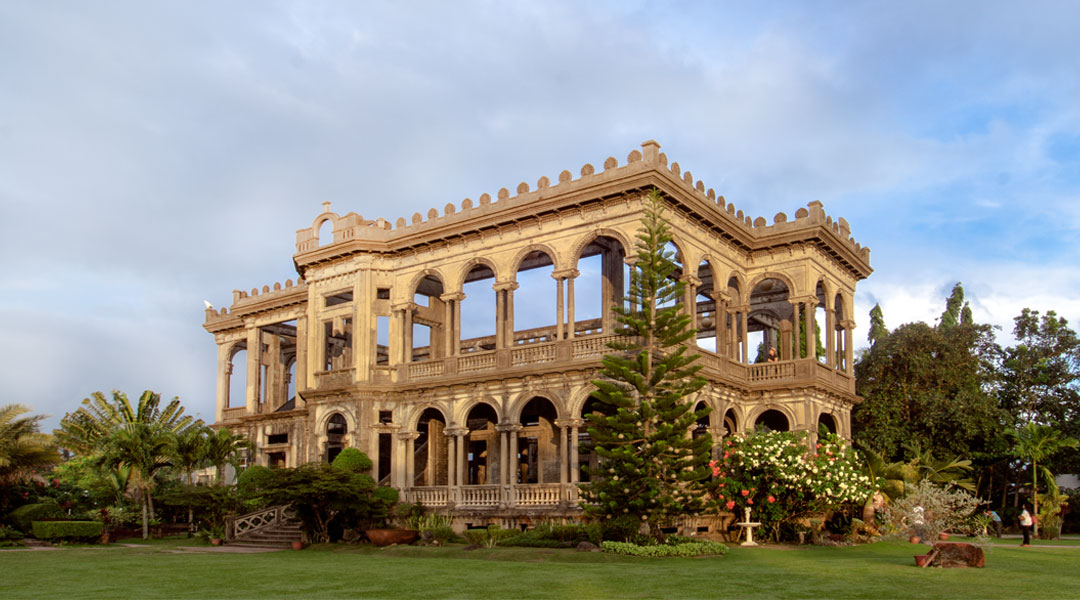
Lacson Mansion Ruins, a neo-Romanesque memento mori
“And on the pedestal these words appear:
‘My name is Ozymandias, King of Kings:
Look on my works, ye mighty, and despair!’
Nothing beside remains. Round the decay
Of that colossal wreck, boundless and bare,
The lone and level sands stretch far away.”
– Ozymandias by Percy Bysshe Shelley
What was once known as Balay Daco (“big house” in Hiligaynon), Simento nga Balay (“cement house”), Balay ni Anoy (“Anoy’s house”) and Lacson Mansion is now called simply The Ruins. Added to its elaborate neo-Romanesque design and the exceptional use of materials for its time, The Ruins is compelling for the story behind it: the majestic mansion was Don Mariano “Anoy” Ledesma Lacson’s grand tribute to the love of his life, who passed away while giving birth to their eleventh child. It was the most grandiose residence in all of Negros at the time, until Don Anoy himself had to destroy it.
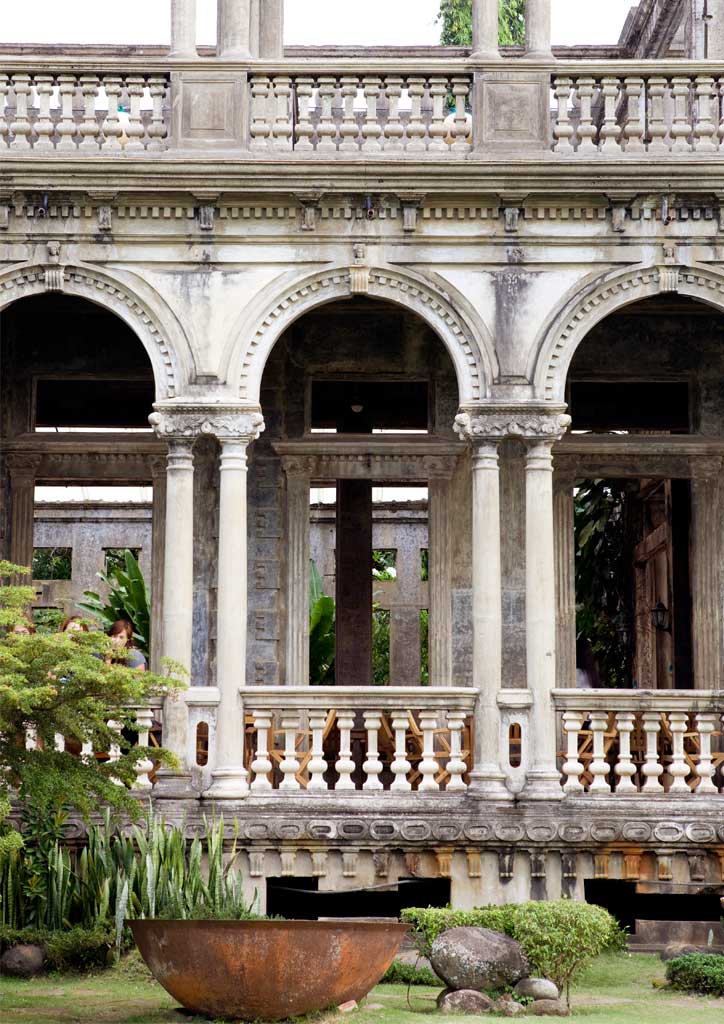
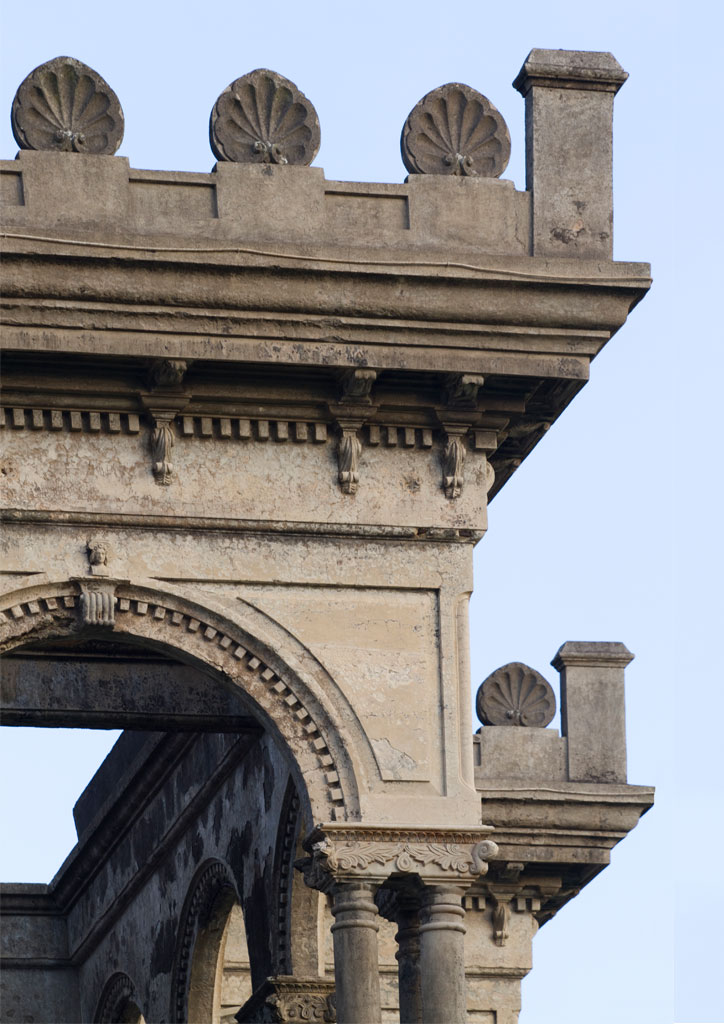
Even before the mansion was finished, word got around that Don Anoy, the great sugar baron, was building the largest house in the province to commemorate his Portuguese wife Maria Braga, who died in 1911. He and his unmarried children were to live in the mansion. Don Anoy and Maria’s father, a wealthy ship captain, brought in the most luxurious furniture and décor, some from the captain’s voyages in Europe and Asia. Its design was inspired by the homes of New England ship captains, which were distinguished by their crown-like roofs.
The structure, built in the middle of a 440-hectare sugarcane plantation, was made of A-grade poured concrete and over-sized steel bars, with thick hardwood flooring. Felipe, one of the sons, oversaw the construction work; he made sure the concrete mixture was precise, and that the pouring work never ceased until it was completed.
READ MORE: Bacolod’s Gaston Ancestral House is glorious in reel and real life
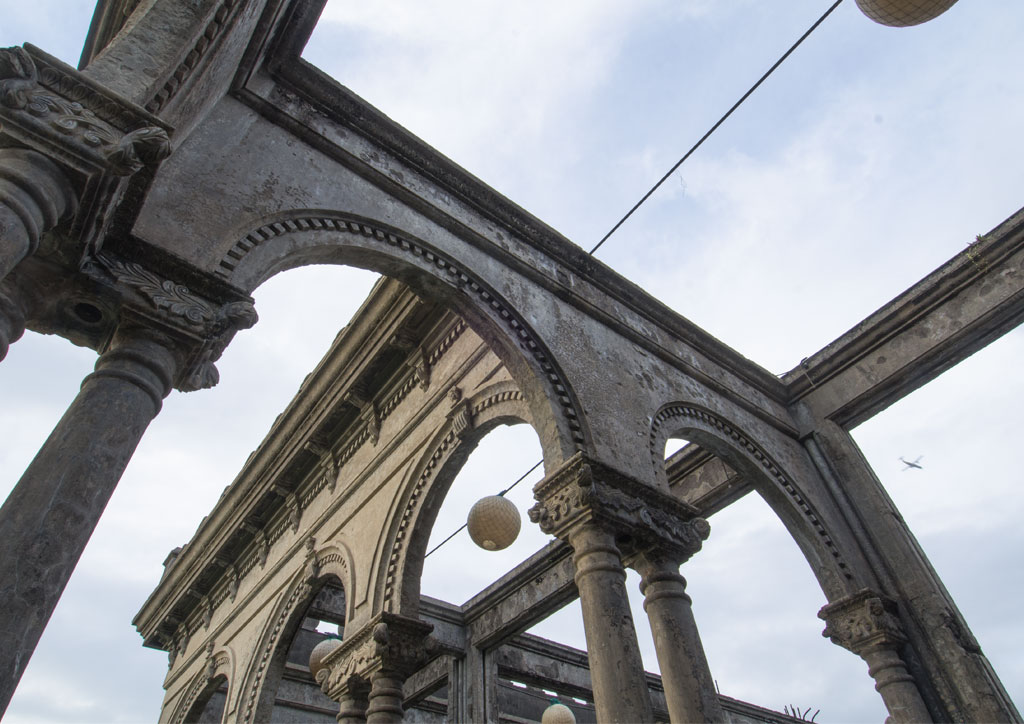
At the outbreak of World War II, fate turned upon the family as they discovered that their gardener was an informant for the Japanese military. Don Anoy learned they were planning to use the mansion as a garrison. Guerilla forces from the United States Armed Forces in the Far East (USAFFE) convinced him to burn the house down, rather than let the Japanese use it. It took five drums of gasoline, another four containing used oil, and three days to reduce the mansion to its steel and concrete shell, which emerged virtually unscathed. It was never rebuilt.
This historical account soon gave way to legend, with some claiming that Don Anoy had the mansion burned down because he was driven by madness from the grief he suffered after Maria’s death. Tragically romantic as this version is, it is highly unlikely as the sugar baron soon remarried and had three more children by his second wife.
READ MORE: Spanish, Chinese, Muslim, and Filipino motifs in Casa Sanson y Montinola in Iloilo
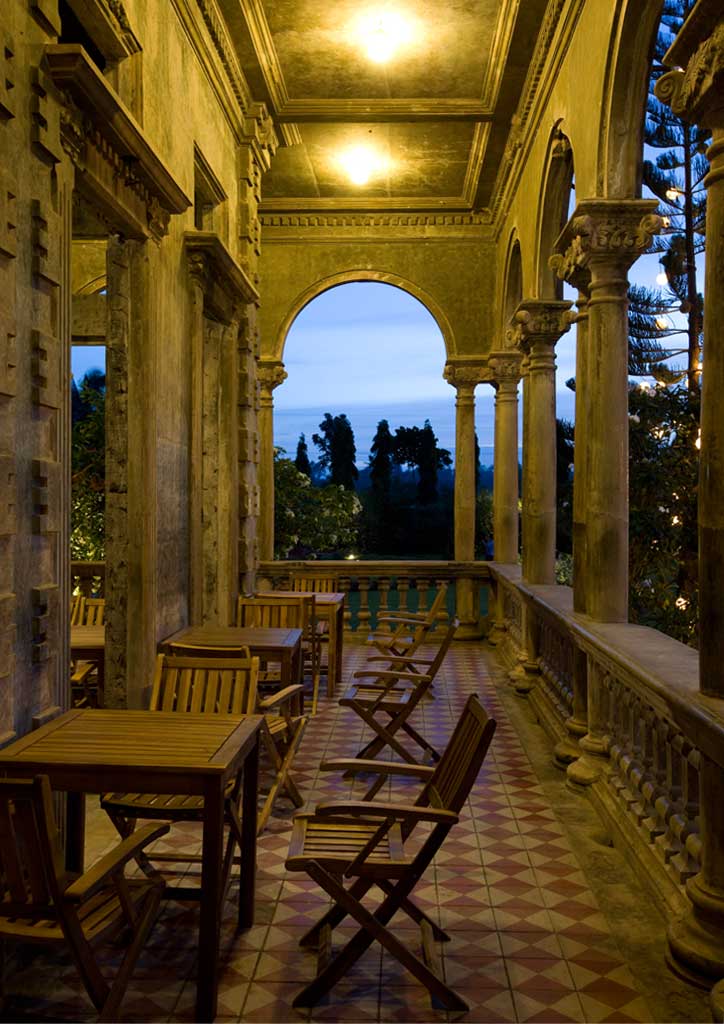
Today, The Ruins is one of Negros Occidental’s must-see tourist attractions, and although it is not clear why the family decided not to rebuild it, the decision seems like a good one. Often, the reasons why reconstruction is not done is because it is too expensive an undertaking, there is too little knowledge of the correct way to reconstruct it according to international conservation principles, or too little information available on the original structure to render an accurate reconstruction.
According to Heritage Conservation Society founding chairperson and International Council of Monuments and Sites (ICOMOS) Philippines president Augusto Villalon, there are no hard and fast rules for deciding what to do with damaged heritage structures. “It all depends on the historical and cultural significance of the project, and the community’s will, patience (since reconstruction takes a long time) and, of course, budget,” he says. “The community—the primary stakeholder—should decide.” They can also opt to do partial reconstruction, which entails incorporating parts of the old, damaged structure into a newly built one.
A recent example of this is the heritage churches of Bohol that were severely damaged by the 7.2-magnitude earthquake that struck last October 15, 2013. Although many Boholanos feared the destruction of the heritage structures would have a negative impact on their livelihood, the church ruins seem to be drawing more tourists than before to Bohol. This implies that preserving these structures as ruins and building a new structure that fits the needs of modern-day churchgoers is highly feasible: the tourist draw of the ruins will provide additional income to the community, and it is less expensive and less complicated than attempting to reconstruct them.
READ MORE: The grand Beaux-Arts style now even clearer in Iloilo’s Lizares mansion
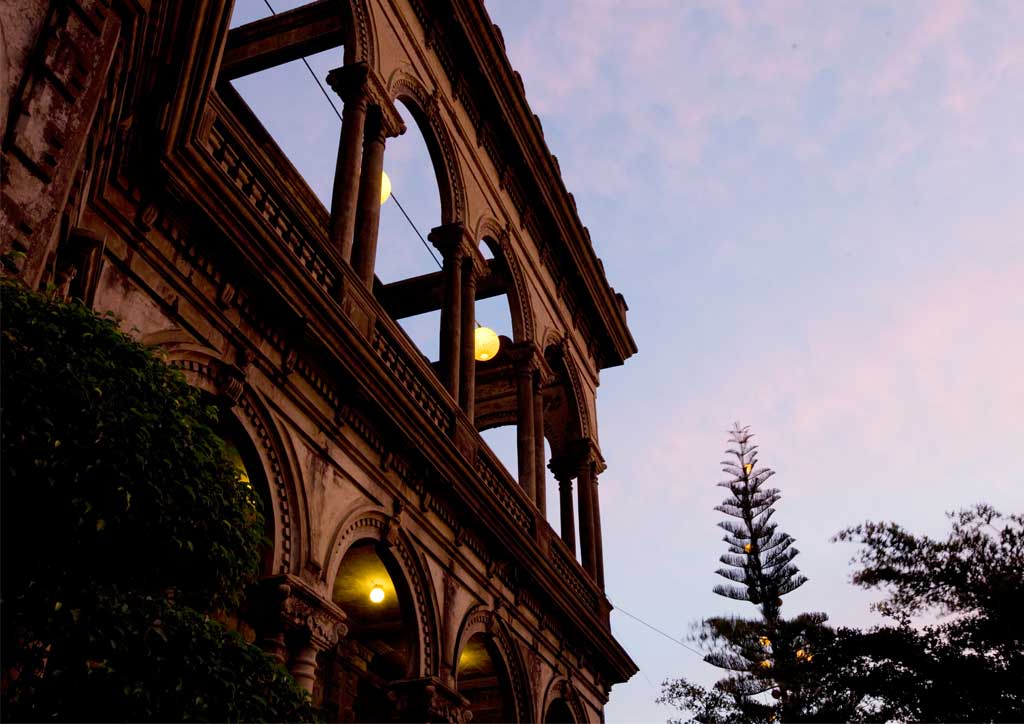
But what is it about ruins that lure curious visitors in the first place? Like most heritage structures left in their ruined state, they are not just architectural keepsakes—they are a memento mori. The Lacson Mansion ruins do not just remind Filipinos of a rich bygone era—one that saw economic prosperity and a cultural peak—it is also a testament to the devastation of war. It is a reminder that even the richest and most powerful man in the land is vulnerable to the capricious tides of fate and human ambition. ![]()
Original article first appeared in BluPrint Volume 4 2014. Edits were made for Bluprint online.
Photographed by Ed Simon and John Daryl Ocampo
READ MORE: Molo Mansion adapted into a cultural souvenir and gift shop


